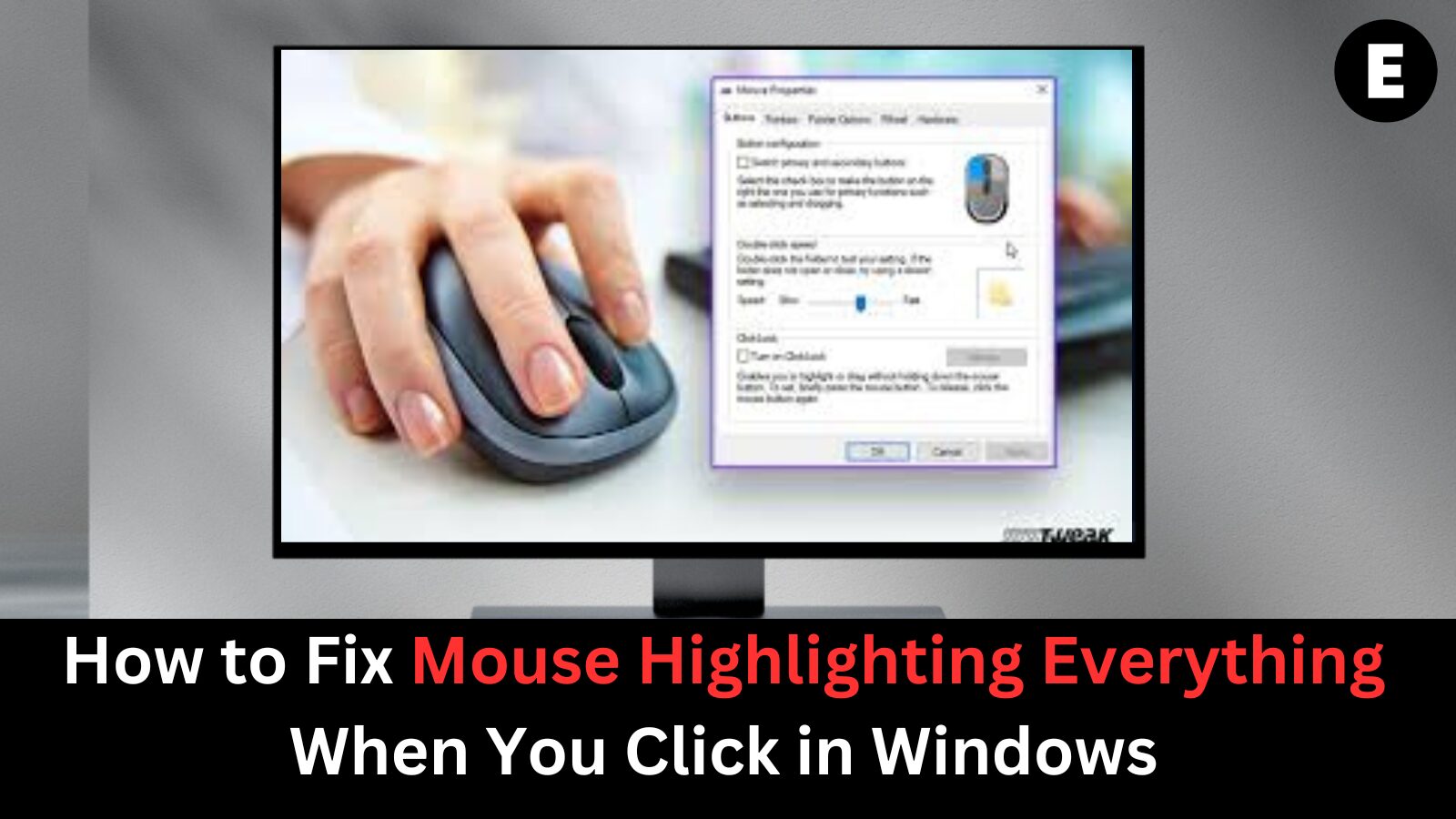Are you experiencing an issue where your mouse highlights everything on the screen with a single click? This frustrating problem can make it difficult to select specific text, images, or interact with files and folders effectively. Whether you’re editing documents, browsing the web, or working in specialized software, this abnormal mouse behavior can disrupt your workflow and cause unnecessary stress.
This common mouse selection issue in Windows is often caused by incorrect settings, outdated drivers, or minor system glitches. The good news is that it’s typically easy to resolve with a few simple troubleshooting steps. In this comprehensive guide, we’ll explore the possible causes behind your mouse selecting everything and walk you through proven solutions to restore normal functionality. Whether you’re a casual user or a professional relying on precision, these fixes will help you regain full control of your cursor and enhance your overall productivity.
Why Does My Mouse Highlight Everything When I Click? Common Causes Explained
If your mouse is selecting or highlighting everything on the screen when you click, you’re not alone—this is a surprisingly common issue among Windows users. Understanding the root cause is the first step toward resolving the problem effectively. Several factors can trigger this mouse behavior, ranging from hardware faults to software glitches.
- Malfunctioning Mouse Button: A worn-out or defective mouse button can cause it to register multiple clicks unintentionally, leading to your system selecting everything under the cursor with a single click. This is especially common in older or heavily used mice.
- Dirty or Damaged Sensor: Dust, debris, or physical damage to the mouse sensor can interfere with its ability to accurately track movement, resulting in erratic behavior like mass highlighting or jittery cursor motion.
- Software or Driver Issues: Outdated or corrupt mouse drivers, incorrect system settings, or third-party software conflicts can cause abnormal input responses. These issues may cause the operating system to misinterpret a single click as multiple commands.
To determine if the issue is hardware or software related, try connecting your mouse to another computer. If the problem persists, it’s likely the mouse itself. If the mouse works fine elsewhere, your current system’s settings or drivers may be to blame.
In the next section, we’ll guide you through step-by-step troubleshooting methods to help you fix this issue and restore your mouse’s normal behavior.
How to Fix Mouse pressing Everything When You Click on Windows
still, do n’t worry — this issue is generally easy to resolve with a many practical troubleshooting way, If your mouse keeps pressing everything when you click. Below, we’ve outlined the most effective styles to fix mouse pressing problems on Windows 10 and Windows 11.
Method 1: Clean Your Mouse Thoroughly
Dust, smut, and general wear and tear can affect your mouse’s detector and buttons, causing it to act aimlessly. drawing your mouse is a quick and easy way to exclude tackle- related problems.
Steps to clean your mouse duly
- Open your mouse( or turn it off if it’s wireless).
- Use a cotton tar dipped in isopropyl alcohol to gently clean around the buttons and crannies.
- Use compressed air to blow out dust and debris from the scroll wheel and detector area.
- Let the mouse fully dry before reconnecting it to your PC.
After drawing, test the mouse again to see if the issue persists.
Method 2: Update Your Mouse Driver
Outdated or corrupted drivers can interfere with how your mouse communicates with Windows, potentially causing click and highlight issues. Updating the mouse driver can often resolve these software-related glitches.
Here’s how to update your mouse driver on Windows:
- Click the Search icon in your taskbar and type : Device Manager.
- Select the Device Manager app from the results.
- Expand the section labeled Mice and other pointing devices.
- Right-click your current mouse device and select Update driver.
- Choose Search automatically for drivers and let Windows find the latest available version.
Once updated, restart your computer and check if the highlighting issue has been resolved.
Method 3: Reinstall Your Mouse Driver
If updating your mouse driver didn’t resolve the issue, reinstalling it from scratch may be the best solution. Corrupted or incomplete drivers are a common cause of mouse misbehavior, such as automatically highlighting everything when you click. Reinstalling ensures you get a fresh, functional version of the driver.
Follow these steps to safely reinstall your mouse driver on Windows:
- Click the Search icon on your taskbar and type : Device Manager. Select the Device Manager app from the results.
- In the Device Manager window, locate and expand Mice and other pointing devices.
- Right-click on your mouse driver (usually listed as HID-compliant mouse or similar) and select : Uninstall device.

4. Confirm the action by clicking Uninstall on the prompt.
Once the uninstallation is complete, restart your computer. Windows will automatically detect your mouse and install the correct driver version during boot-up.
This process helps eliminate any hidden driver issues that could be causing erratic mouse behavior. After rebooting, test your mouse to confirm the problem is resolved.
Method 4: Run the Hardware and Devices Troubleshooter.
If your mouse continues to highlight everything when clicked, the issue could be rooted in a hardware conflict. Windows includes a built-in utility known as the Hardware and Devices Troubleshooter, designed to detect and automatically resolve hardware-related issues—including problems with your mouse.
Although this tool has been removed from the standard settings menu in the latest versions of Windows 10 and Windows 11, you can still access it through the Command Prompt. Here’s how:
- Press Windows + R on your keyboard to open the Run dialog box.
- Type cmd and press Enter to launch the Command Prompt.
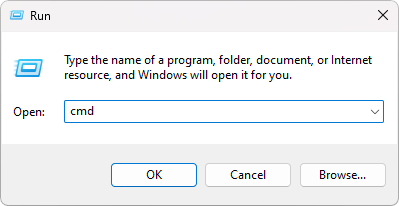
3. In the Command Prompt window, copy and paste the following command then press Enter: msdt.exe -id DeviceDiagnostic
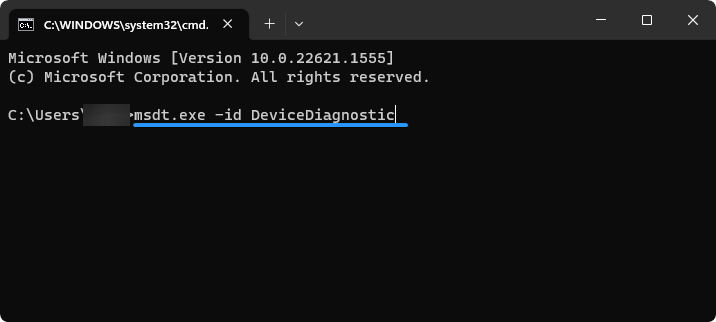
4. This will launch the Hardware and Devices Troubleshooter. Follow the on-screen instructions to scan for hardware problems.
If any issues are detected with your mouse or related components, the troubleshooter will offer solutions or apply fixes automatically. This method is a quick and effective way to restore normal mouse functionality without diving deep into advanced settings.
Method 5: Adjust Your Mouse Settings in Control Panel
If your mouse highlights everything when you click, the issue might be due to incorrect mouse settings configured within Windows. One of the most common culprits is an improperly set double-click speed, which can lead to the system registering multiple unintended clicks.
Follow these steps to adjust your mouse settings and eliminate unwanted highlighting behavior:
- Press Windows + S on your keyboard to open the search bar, then type Control Panel and click on the top result to open it.
- In the Control Panel, set the View by option in the top-right corner to Large icons.
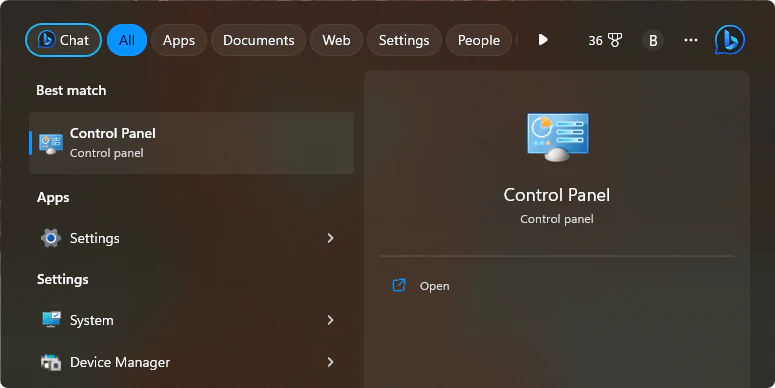
3. Click on the Mouse option to explore the Mouse Properties window.
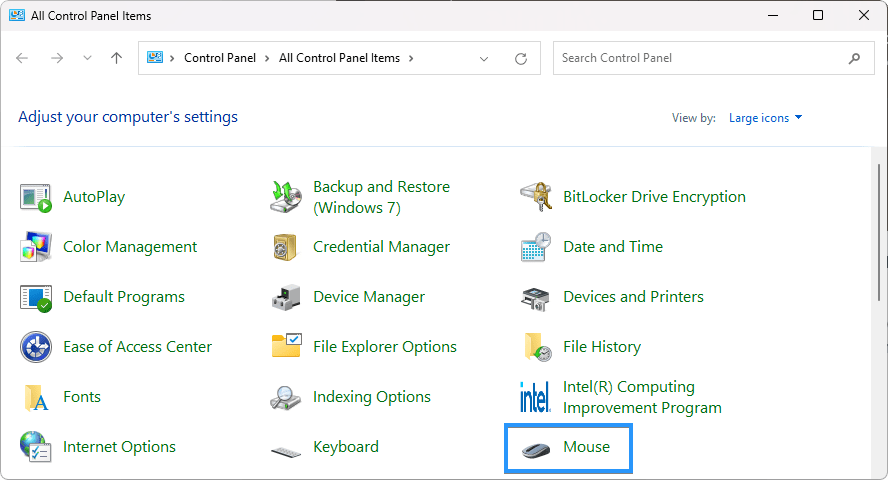
4. Under the Buttons tab, locate the Double-click speed slider.
5. Adjust the slider to the middle position. Setting the speed too high can cause your system to misinterpret single clicks as double-clicks—resulting in everything being selected or highlighted.
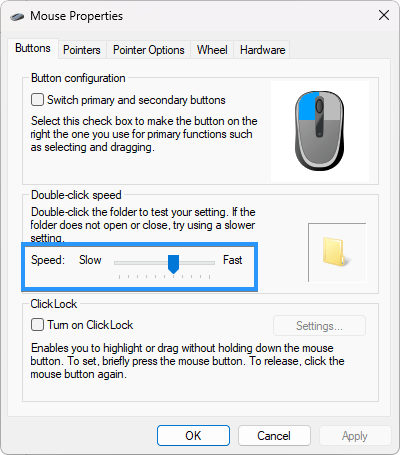
6. Click Apply, then OK to save the changes.
Once adjusted, test your mouse to see if the highlighting issue has been resolved. Fine-tuning these settings can make a significant difference in how accurately your mouse responds to clicks.
Method 6: Turn Off Sticky Keys to Prevent Mouse Highlighting
Sticky Keys is an availability point in Windows designed to help druggies with mobility impairments. While helpful in many scenarios, it can sometimes interfere with normal mouse operations—leading to problems like your mouse highlighting everything when you click. If you’ve accidentally enabled Sticky Keys or don’t need the feature, disabling it may resolve the issue.
Follow these steps to turn off Sticky Keys on Windows 10/11:
- Click on the Start menu in the lower-left corner of your screen, or press Windows + I to open the Settings window quickly.
- From the menu on the left-hand side, choose Accessibility.
- Scroll down and select Keyboard from the available options.
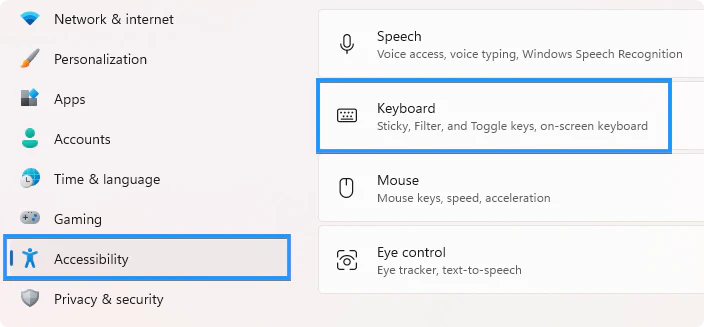
4. Locate the Sticky Keys section, and uncheck the box that says “Keyboard shortcut for Sticky Keys” or toggle the switch to Off.
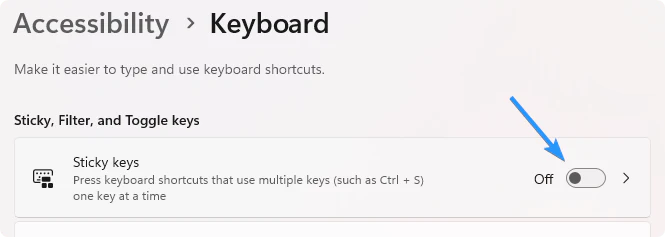
Disabling Sticky Keys ensures that key combinations and mouse clicks function as expected, which can help resolve frustrating selection issues. After applying this change, test your mouse to see if the problem persists.
Method 7: Disable ClickLock to Stop Your Mouse from Highlighting Everything
ClickLock is not a known mouse feature in Windows designed to assist users who have difficulty holding down the mouse button. While helpful for accessibility, it can unintentionally cause issues—such as your mouse highlighting everything when you click. If ClickLock is enabled, your system may interpret a single click as a drag or selection command, leading to the frustrating highlighting problem.
Follow these steps to disable ClickLock on Windows:
- Press Windows + S to open the Windows Search bar, then type Control Panel and hit Enter.
- In the Control Panel, change the View by setting to Large icons (top right corner).
- Click on Mouse to open : the Mouse Properties window.
- In the Buttons tab, locate the ClickLock option.
- Make sure the ‘Turn on ClickLock‘ checkbox is unchecked.

6. Click Apply, then OK to save the changes.
Disabling ClickLock can immediately resolve mouse behavior issues caused by inadvertent click-and-hold actions. After making this adjustment, test your mouse to confirm that the highlighting problem has been resolved.
Method 8: Run the System File Checker (SFC) to Repair Corrupted Files
If your mouse is highlighting everything when you click, corrupted system files may be the root cause. Fortunately, Windows includes a powerful built-in diagnostic tool called the System File Checker (SFC) that scans and repairs damaged system files. Running an SFC scan can help restore normal mouse behavior by fixing the underlying system issues that may be interfering with input functionality.
Follow these steps to run an SFC scan on Windows:
- Click on the Search icon in your taskbar, type Command Prompt, and right-click the top result.
- Select Run as administrator to launch the Command Prompt with elevated privileges. If prompted by User Account Control, click Yes.
- In the Command Prompt window, type the following command and press Enter:
sfc /scannow

4. Wait for the scan to complete. This process may take few minutes depending on your system’s performance.
5. If any integrity violations or issues are found, the System File Checker will attempt to repair them automatically.
Once the scan finishes, restart your computer and test your mouse. If corrupted files were the issue, this fix should restore normal mouse behavior and eliminate the highlighting problem.
Running regular SFC scans can help maintain system health and prevent unexpected glitches, ensuring a smoother Windows experience overall.
Method 9: Run DISM to fix Windows System Image
If your mouse continues to highlight everything upon clicking, and traditional troubleshooting hasn’t worked, it’s time to use the Deployment Image Servicing and Management (DISM) tool. DISM is a powerful command-line utility in Windows designed to fix deeper system-level issues, including those caused by corrupted Windows images or misconfigured system files.
Running a DISM scan can repair the underlying Windows image, ensuring all system components — including mouse input functionality — are working properly.
Here’s how to run the DISM tool on Windows:
- Click on the Search bar in your taskbar or press
Windows + S, and type Command Prompt. - From the search results, right-click on Command Prompt and choose : Run as administrator.
- If prompted by User Account Control , click Yes to proceed.
- In the Command Prompt window, type the following command and hit Enter:
DISM.exe /Online /Cleanup-image /Restorehealth

5. Wait patiently while Windows scans and repairs the system image. This process may take few minutes, depending on your system speed and the extent of any corruption.
Once the scan completes successfully, restart your computer and test your mouse. If the issue was related to damaged system components, the DISM utility should have resolved it.
Regularly using DISM in combination with SFC scans is a great way to maintain the stability and responsiveness of your Windows system — especially when experiencing input device issues like unwanted mouse highlighting.
Conclusion
Dealing with a mouse that highlights everything when clicked can be incredibly frustrating, but with the right troubleshooting methods, you can easily resolve the issue. From simple fixes like cleaning your mouse or updating drivers to more advanced solutions like running the System File Checker (SFC) or using the DISM tool, each of these steps addresses common causes of mouse malfunctions in Windows.
By following the methods outlined above, you can restore normal functionality to your mouse and improve your overall system performance. Remember, regular maintenance — such as keeping drivers updated, running scans, and managing system settings — will help prevent future issues and keep your Windows device running smoothly.
If you’re still facing problems after trying these solutions, it may be worth considering professional help or exploring further troubleshooting guides.
One more thing
If you’re in search of a software company that embodies integrity and upholds honest business practices, your quest ends here at Ecomkeys.com. As a Microsoft Certified Partner, we prioritize the trust and satisfaction of our customers. Our commitment to delivering reliable software products is unwavering, and our dedication to your experience extends far beyond the point of sale. At Ecomkeys.com, we provide a comprehensive 360-degree support system that accompanies you throughout your software journey. Your trust is our foundation, and we’re here to ensure that every interaction with us is a positive and trustworthy one.

